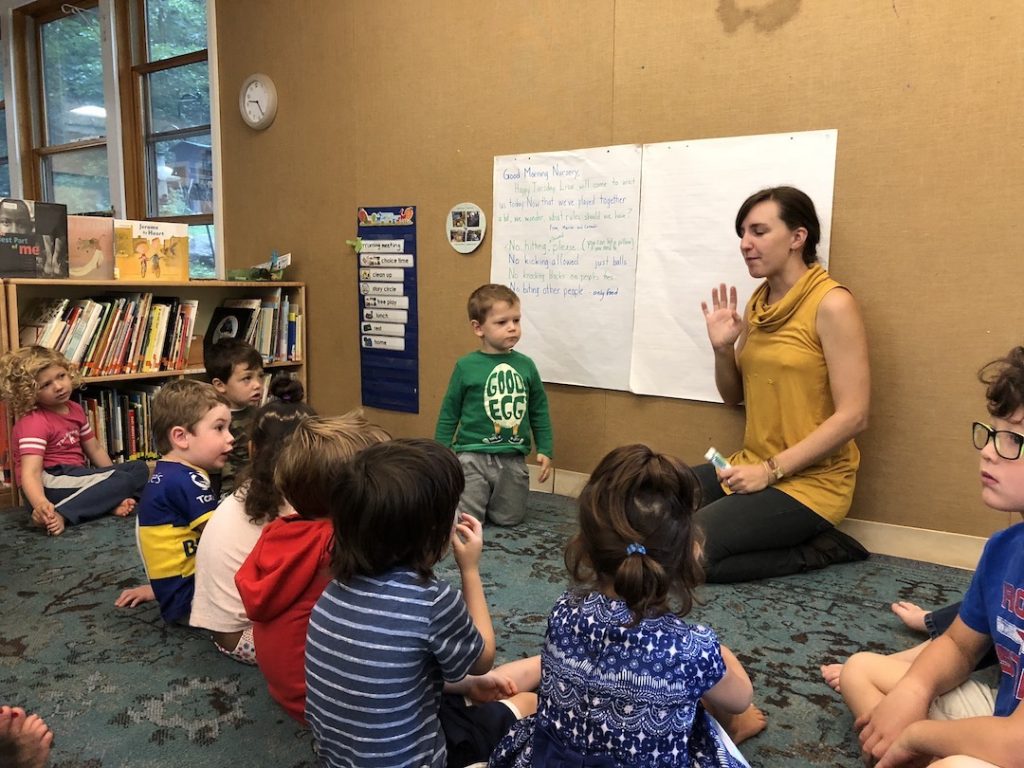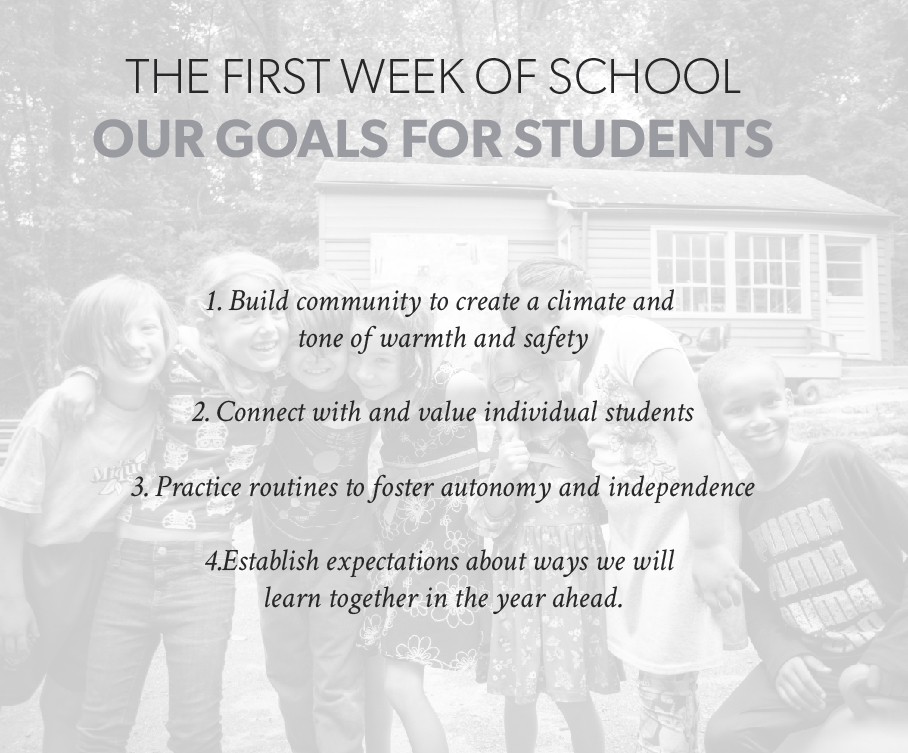Children at the Center of Layered Learning
I just spent a week observing all of the group classrooms at Miquon. What struck me most is how children consistently play the essential role in creating meaningful learning experiences. In every single classroom I visited, children were observing, children were asking questions, children were making meaning, children were forming relationships.
They were at the center of thoughtfully constructed experiences; the circumstances crafted by their teachers allowed their curiosity and caring selves to flow forth. I have notebook pages full of observations to support this. I was incredulous when watching certain lessons unfold; in classrooms of all ages, teachers wove multiple goals into seemingly simple activities.
In the nursery, Marisa and Cassandra began their first circle of the school year with a name game song. Without skipping a beat (literally), they set the tone for inclusivity across the gender spectrum, helped children meet their classmates, and recognized every student as an important part of the group with a voice that should be listened to and respected.
Marisa started simply with “My name is Marisa and I liked to be called a girl.” Everyone followed and sang “Marisa is her name, Marisa is her name.” Turning to the child next to her, “What’s your name?” “Hello Jason, do you prefer to be called a boy or a girl?” After his response, everyone sang “Jason is his name, Jason is his name.”

This may seem like an obvious and cute start to the nursery year but it was so much more. A simple song involved multiple modalities (listening, following a pattern, singing) and immediately created a developmentally appropriate opening that normalized and invited future discussions about gender in the classroom.
As a former nursery parent, I know that these teachers prioritize the investigation of identity and will most likely continue to openly explore ideas and questions as they are expressed by the children.

At the other end of the school, I watched fifth and sixth graders demonstrate what our tenets look like when expressed through children who are more experienced members of the community. Explicitly, the activity facilitated by Diane and Sarah focused on the goals of noticing and wondering*; implicitly, their lesson emphasized group problem solving, listening skills, and valuing all community members as important holders of questions and knowledge.
[*Conscious noticing and wondering have been components of our progressive approach for many years, but their importance as critical learning tools in all areas was highlighted this spring during our mathematics professional development when we worked with Annie Fetter.]
Earlier in the day, Diane and Sarah had asked children to carefully observe the room and write down ten things they noticed and ten things that they wondered about. In the afternoon, they brought the group together to share their questions and knowledge. This is the part that impressed me; instead of just having children sit in a whole group and raise their hands to ask questions of their teachers, they embedded multiple opportunities for agency and engagement.
To begin, the class was asked to organize itself into two concentric circles with the inner circle facing the outer circle. After the request was made, the teachers stepped back and gave students the time they needed to figure this out for themselves. This doesn’t sound like a big deal, but it was one small piece of fostering the overall tone that kids are capable. Instead of having a teacher direct their every movement, students had to employ cooperative communication, spatial awareness of 18 moving chairs, and revision skills to make final adjustments.
Once everyone was seated, the teachers asked students who had been in the classroom last year, affectionately called “veterans,” to sit in the small circle and students who were new to the class to sit in the outer circle. This small piece of language (veterans) was introduced in a way that felt helpful, rather than hierarchical. The returning students had their experience from the prior year valued and framed in a way that encouraged them to be proud to offer help to incoming classmates. Those who were new to the group seemed to be more at ease in the knowledge that their older classmates are expected to be welcoming and supportive; I think they also got the message that it’s okay to not know everything and that learning classroom routines and culture takes time.
The pairs were then asked to share their ten observations from the morning and see if there were any novel noticings that didn’t overlap. They were also asked to share their wonderings and provide answers for one another if they could. After a few minutes in each pairing, students seated on the inner circle rotated so they could connect one-on-one with each new member of the group.
The activity concluded with time to ask the teachers about a few unanswered questions and a brief message about how noticing and wondering would be a recurring theme throughout the year. This lesson provided a clear scaffold to support the main goals of the first weeks of school–building community, introducing students to the physical environment, and establishing a climate of active participation.
It was thrilling to see how much responsibility our students were being given to think, share, and apply their knowledge as members of a community, even on the first day of school.

I also appreciated the genuine respect afforded to children by adults and by their peers. Though I chose to highlight the youngest and oldest students at Miquon, these themes were apparent throughout the campus. When seen across the spectrum of ages over the course of a week, the intentionality with which activities were crafted to meet multiple goals was mind blowing.
I’m not sure if I would have been able to pick up on these nuances earlier in my career or if I worked in a field outside of progressive education. The learning I witnessed clearly supported the nine tenets that Miquon holds dear and I feel privileged to continue this sacred work; the work of preparing the soil that nourishes our children as they grow.
